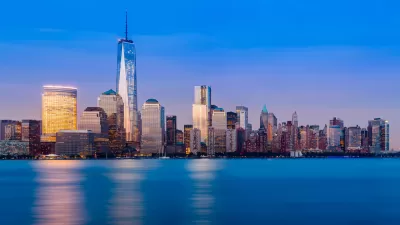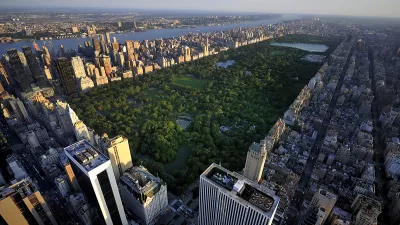Kicking off its in-depth examination of the ways in which New York City has been remade during Mayor Bloomberg's tenure, Matthew Schuerman looks at the city's astonishing vertical growth, a significant feat considering the shadow of 9/11.
"In research conducted for WNYC, NYU's Furman Center for Real Estate and Urban Policy determined that new buildings constructed between 2000 and 2010 were taller - in terms of the number of floors - than those built during the previous decade - in all but six of the city's 59 community boards. Those increases can be found in areas where zoning rules had been changed to accommodate taller buildings, such as downtown Brooklyn, as well as areas that saw no rezonings, such as Washington Heights and Inwood, where developers took advantage of old zoning rules that allow buildings to be much bigger than they were."
During Bloomberg's tenure, 7 of the city's 20 tallest buildings were constructed.
"Real estate developers say the biggest reason they built bigger and taller was because Mayor Bloomberg projected the sense that the city had a future, and that the future looked bright (at least to them and the people able to afford the 360-degree views from atop their towers)," explains Schuerman.
"Francis Morrone, an architectural historian and author of the forthcoming Guide to New York City Urban Landscapes, said he appreciates that Bloomberg is trying to keep pace with London and Shanghai in the competition for global companies. But Morrone said the mayor's growth agenda also has a major downside. He cited a 2009 study by the Center for an Urban Future [PDF] that argued that tens of thousands of middle-class New Yorkers were leaving the city because of the high cost of living."
"The city is going to survive. The city is going to thrive," Morrone said. "Not all the people in the city are going to thrive, or even continue living here."
Other entries in the "New York Remade" series have looked at the Mayor's efforts to expand affordable housing and lengthening commutes for the city's poorer residents.
FULL STORY: New York, the Vertical City, Kept Rising Under Bloomberg

Alabama: Trump Terminates Settlements for Black Communities Harmed By Raw Sewage
Trump deemed the landmark civil rights agreement “illegal DEI and environmental justice policy.”

Study: Maui’s Plan to Convert Vacation Rentals to Long-Term Housing Could Cause Nearly $1 Billion Economic Loss
The plan would reduce visitor accommodation by 25% resulting in 1,900 jobs lost.

Planetizen Federal Action Tracker
A weekly monitor of how Trump’s orders and actions are impacting planners and planning in America.

Wind Energy on the Rise Despite Federal Policy Reversal
The Trump administration is revoking federal support for renewable energy, but demand for new projects continues unabated.

Passengers Flock to Caltrain After Electrification
The new electric trains are running faster and more reliably, leading to strong ridership growth on the Bay Area rail system.

Texas Churches Rally Behind ‘Yes in God’s Back Yard’ Legislation
Religious leaders want the state to reduce zoning regulations to streamline leasing church-owned land to housing developers.
Urban Design for Planners 1: Software Tools
This six-course series explores essential urban design concepts using open source software and equips planners with the tools they need to participate fully in the urban design process.
Planning for Universal Design
Learn the tools for implementing Universal Design in planning regulations.
Caltrans
Smith Gee Studio
Institute for Housing and Urban Development Studies (IHS)
City of Grandview
Harvard GSD Executive Education
Toledo-Lucas County Plan Commissions
Salt Lake City
NYU Wagner Graduate School of Public Service





























